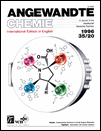Is Kekulene Really Superaromatic?†‡
This work was supported by the Fonds der Chemischen Industrie, the Deutsche Forschungsgemeinschaft, the Volkswagen-Stiftung, and Convex Computer Corporation. We also thank Prof. J. Cioslowski for discussions.
Dedicated to Professor Heinz A. Staab on the occasion of his 70th birthday
Graphical Abstract
Kekulene is indeed a “normal” aromatic molecule. This conclusion is reached in a theoretical study in which a number of calculated properties of kekulene and reference compounds such as benzene, phenan-threne, and 1,2:7,8-dibenzanthracene were compared. Structure 1 is the most apt description of this molecule, and claims of superaromaticity can finally be laid to rest.





